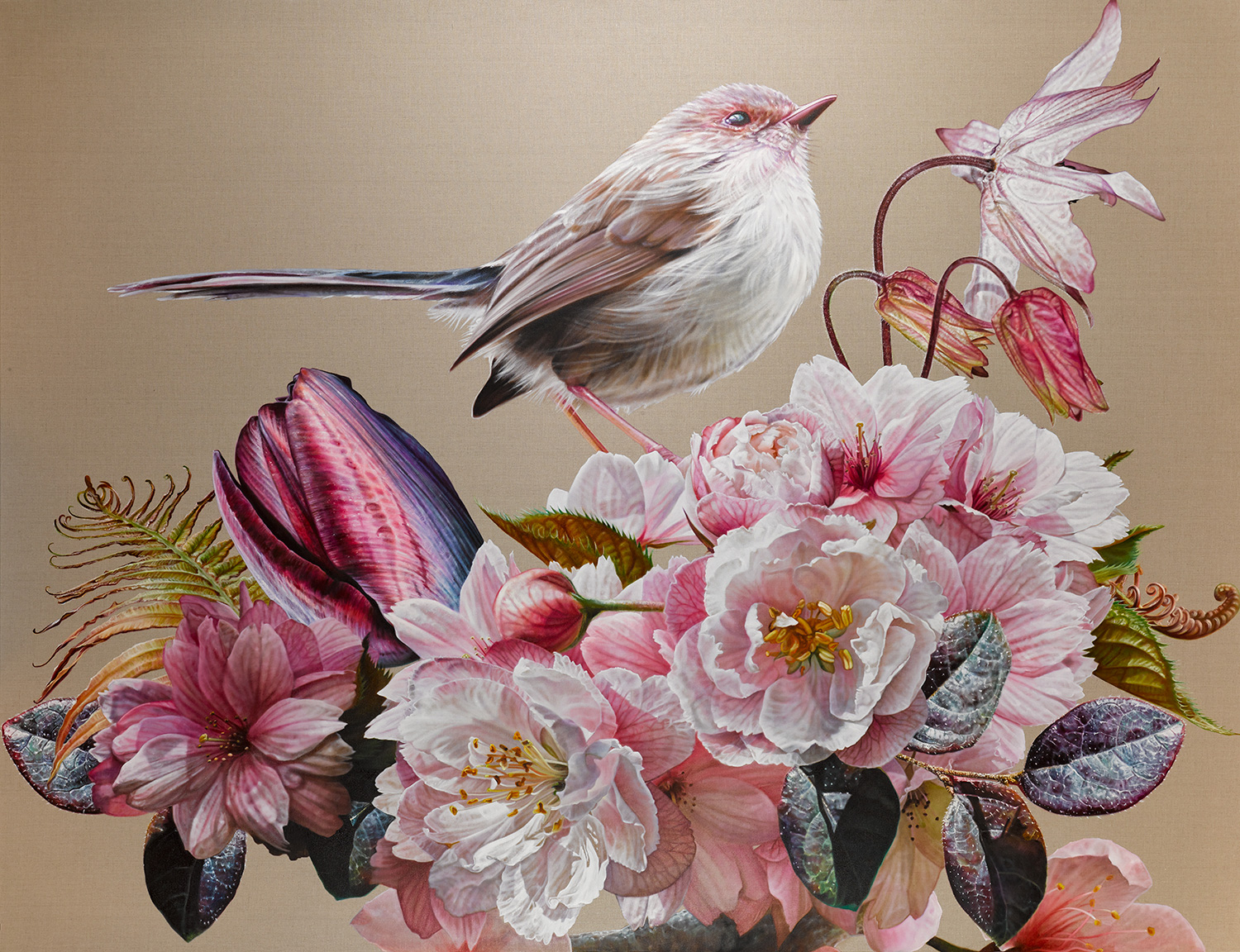Malurus cyaneus. Divine Augur and Bird of Bright Cheer, 2017, oil on linen, 192 x 252cm, SOLD
He who shall hurt the little wren
Shall never be beloved by men
(William Blake, Auguries of Innocence)
The wren is an active little bird, and beloved in Celtic traditions. It is vibrant, alert, and efficient. The Celts honoured the wren’s fastidiousness and believed the wren’s lesson was to effect small but significant positive changes in our daily lives.
A wren’s light, bright cheer carries over into its beautiful song. Auguries were drawn from its chirping, and the direction of its call was highly significant. Bards were particularly inspired by the wren’s song and the bird became a symbol of music, poetry and art. The song of the wren embodied a carefree nature and a contented spirit, prompting us to keep a happy heart and to be kind to others.
Like many songbirds, the wren is adept at migration and movement. The wren flits from place to place with shallow roots, reminding us that true happiness lies not in our material gains, but in the quality of our relationships with others.
The wren became a symbol of wisdom and divinity, and each New Year an apprentice Druid, in search of wisdom, would go on a quest to find a wren. If one were found, it would be taken as a sign of being blessed with insight for the coming year. Locating this tiny and elusive bird became a metaphor for finding the elusiveness of divinity in life.
The wren may be tiny, but she is powerful. It was said that whomsoever tried to steal a wren’s eggs would find their home struck by lightning and their hands would shrivel.
Malurus cyaneus – this most sacred bird – is common and familiar across southeastern Australia.
